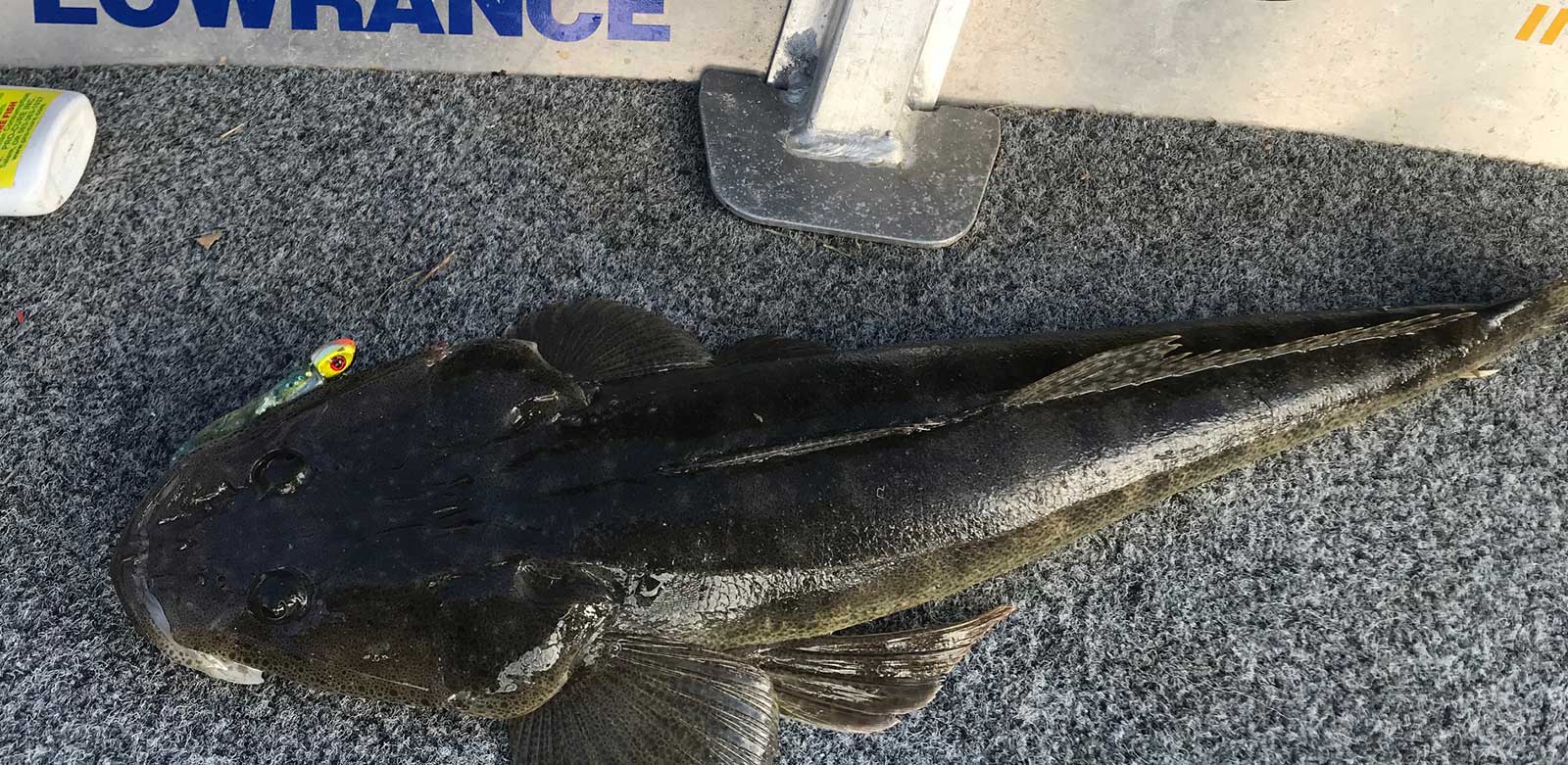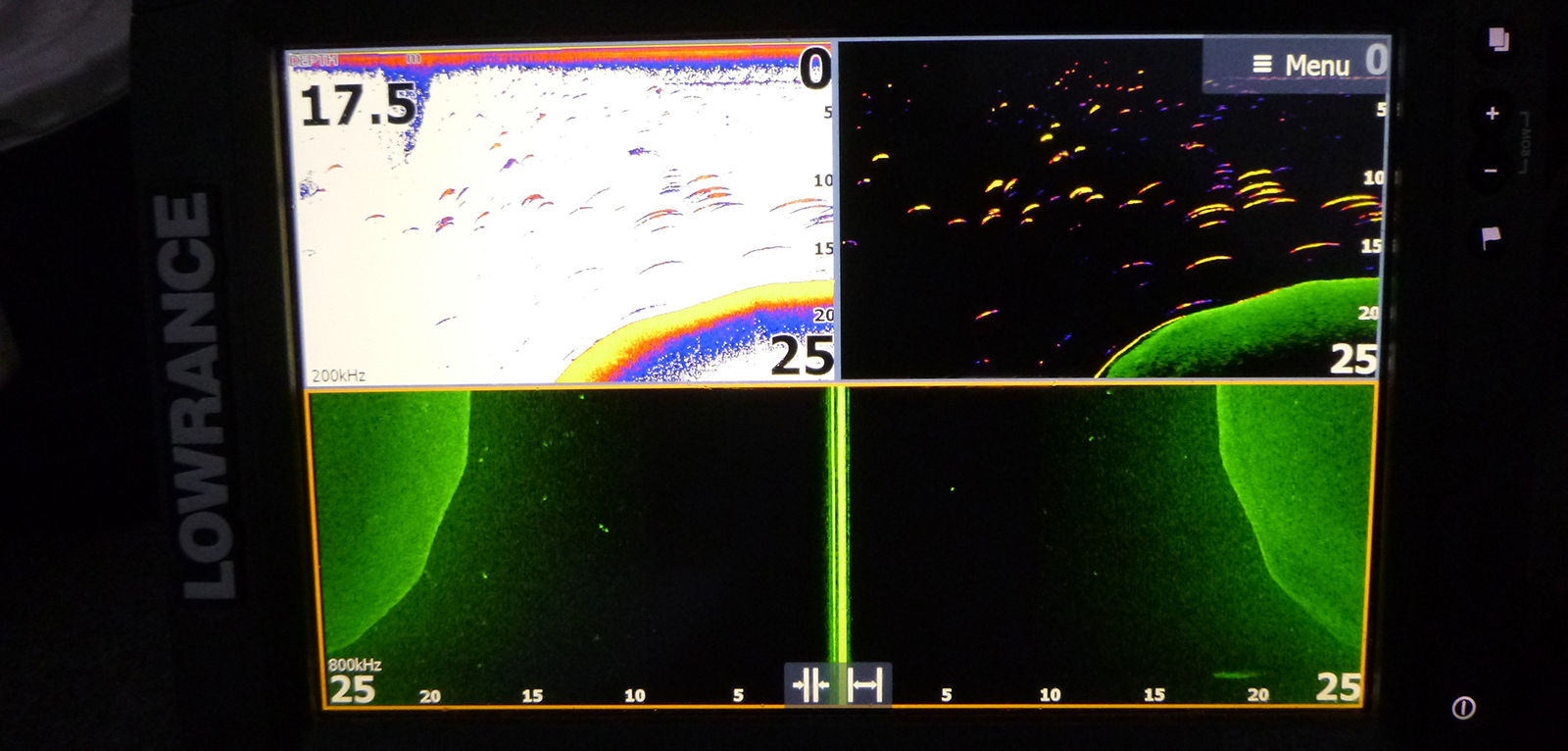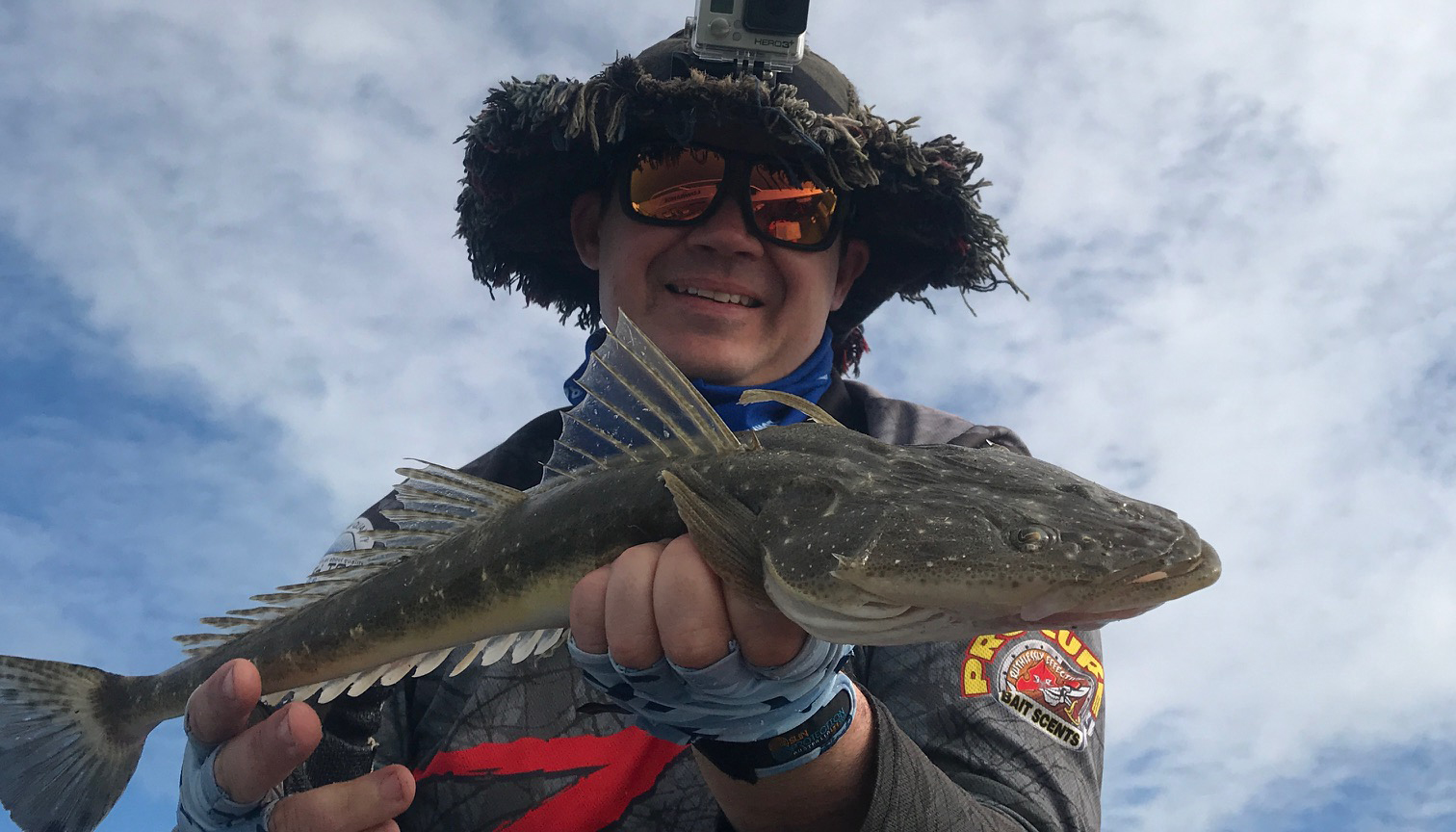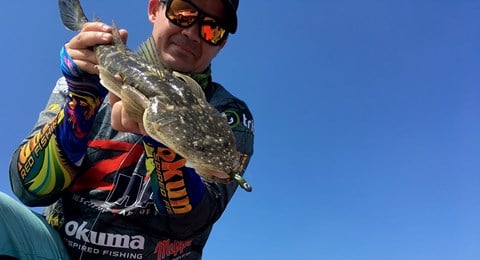I’m sure I’m not the only person that reads a fishing magazine and drools over the big King’s, Jew and the illusive meter flathead, but for most of us, catching trophy fish is usually more of a special occasion rather than an everyday occurrence. When I sit back and think about my own fishing trips, the majority of them are spent chasing around bread and butter species like bream and flathead. Flathead are at the top of my target species, as I don’t mind a feed as well as the sporting aspects of throwing artificial presentation for them. So throughout this article I’m going to run through my flathead edge bite techniques, lures and of course how I like to use my sounder to target flathead and bream.

The Locations:
Bream and flathead are arguably the most accessible found in estuary systems around the country, they’re both happy cruising the flats in search of food as wells as positioning themselves around the deeper areas of the estuary system, amongst structure like rubble patches, pylons, jetties, bridges and these are also high interest area for angler targeting these two species. The one thing that ties the shallow and deep locations together is a food source. For the fish, there is no point sitting at the dinner table if no one is bringing dinner. This is something to keep in mind when sounding out an area for structure, keep your eyes peeled for bait showing on the sounder or flicking on the surface.
Like a lot of locations around the country, my estuary has a large amount of flats that become exposed as the water drains to low tide. This sand bank with water draining is the most common area for me to target flathead and bream (edge bite). Now it may seem funny that I need a sounder to work the edge of a sand bank and years ago I would thought the same thing, but like I said earlier structure and bait is key to finding fish. On the high tide bait and predators like bream and flathead will congregate around structure like weed banks, rocky / shoaly bottom and even a deeper diverts in the sandy bottom. When working the flats on high tide a set of Polaroid sunglasses is going to be your best friend, but once that water starts draining out the bait and fish will look for structure in the deep pockets of water. This is where having a quality sounder makes all the difference, mine in particular is a Lowrance Elite Ti² (12inch) and it is my set of Polaroid glasses for deep water.
So my approach to working the deeper edges is to position the boat at approximately one cast length from the dry bank edge and work my Zman soft plastics with a tradition hop and pause style retrieve back out to the boat. If it is not reaching the bottom the general rule thumb is to put a slightly heavier jig head on or give it a little more time to reach the bottom with a longer pause, before working your plastic again. Keep on the depth as this will be a good indicator as to how long you need to wait, deeper the water longer the pause. Factors like tide and the style of plastic your use will also vary how it’ll take to reach the bottom. Hot tip: Focus some casts around the drains (area where the water is draining out) these are hot spots for predators like flathead. Now although I’m concentrating on casting to the edge, I’ve always got an eye on my sounder, I’m looking for evidence of structure or bait holding out either side of the boat, so with that in mind my sounder it usually setup with a traditional sonar page, structure and side scan pages. I’ll also run add a charts page if I have marked a piece of structure from a previous trips.

The sounder:
When I’m using the sonar and DownScan (with Fish Reveal switched on), I’m not only looking for fish arches and schools of bait I’m also scanning the bottom looking for the deep diverts and drops off, as most anglers know the bait will also concentrate in these areas. With the SideScan, once again I’m looking for signs of structure that are creating a nice shadow, these are definitely worth a cast as these small pockets of structure are likely to be holding a by catch of not only bream and flathead but estuary cod and the occasional Jewfish also. I’ll also pick out schools of bait that are holding just off the boat, they show up as either a mass that creates a shadow. When they’re spread out a little further will should up looking more like scattered bait fish, once again I’ll put a few casts in just to see if I can temp a bite from any predators. This year this approach has resulted in a by catches of tailor and Jew fish. I’ll never get sick of saying this but try and “match the hatch” to what you think the bait could be. In my system schooled up bait is more than likely hearing or hardy heads both of which are green on top with a silvery under belly, so my go to colours when trying to match the hatch is usually a Zman Slim Swimz in a Baby bass or midnight oil or out of the box presentation like a Mepps (Bug) inline spinner. Another thing I look for when using my SideScan is the defined rise in the bank, some banks will rise quick and other will be more drawn out, these steeper define edge are good fish highways and I have seen everything from bream to bull sharks patrolling these edges in search of food.
I use the chart page more often than not, not only for navigating between locations during my day and night session, but I also scan the chart page when drifting an edge of a gutter or bank. This is primarily for areas I have fished before or a point of interest mark on the chart, like deeper areas or points that is like to hold bait. I often have what I refer to as a milk run of marks or particular spots I like to fish, having them marked means I can position the boat a cast length off while I’m working my way down and edge, this allows me to hit each of the marks without spooking the fish that are holding. You’ll be amazed what holding in really shallow water on the smallest bit of structure. Having an electric motor to do this mean you can manoeuvre the boat around the structure and hold in the perfect spot, it is also a handy tool to drag bigger fish away from structure when hooked on light gear. I’m not going to lie, I’m looking forward to Lowrance’s Ghost bow mount to come out in salt water version, keep an eye out for that release.

The Gear:
With the popularity of fishing increasing, easily accessible waters are getting more pressure. For people that have been fishing years they have seen a distinct change from big heavy rod and reels style of fishing an approach with more finesse. The technology in rod and reels reflects this and with good reason, it works. For flathead, my go-to combo are Okuma 1-3kg and a 2-4kg both setup with 3000 size reels, braid is usually Platypus 8 and 10lb with 10 lb stealth leader. I find with a good quality fishing gear even a 1-3kg setup will put the brakes on a PB flathead or even a sneak school Jew.
I’ve said it before and I’ll say it again, your sounder is your eyes into the underwater world, there is plenty of gurus out there that know every inch of their units. They have adapted that knowledge to the styles of fishing they do and I’m no different. I use my sounder in a particular way to find bait, fish or structure that is likely to hold fish. By using a combination of charts, sonar, DownScan and SideScan imagery I caught me some amazing PB fish and of course regular catches of my bread and butter table fish.
Hope you’re getting amongst it, Screaming Dragz.
Sean’s go to Flathead Tackle box:
TT headlockz, Demon Headz and Big Eyes in ¼ and 3/8th
Zman Slim Swims 2.5 and 3 Inch (Baby Bass and midnight oil)
Zman 3 inch Minnowz (Purple death)
Mepps (Bug) inline spinner (Olive)
Platypus 8 and 10lb braid with 10lb stealth leader
Favourite combo Okuma Helios SX 1-3kg and 2-4 kg matched to Helios SX 30
Lowrance Elite Ti² (12inch) is my deep water Polaroids.


















